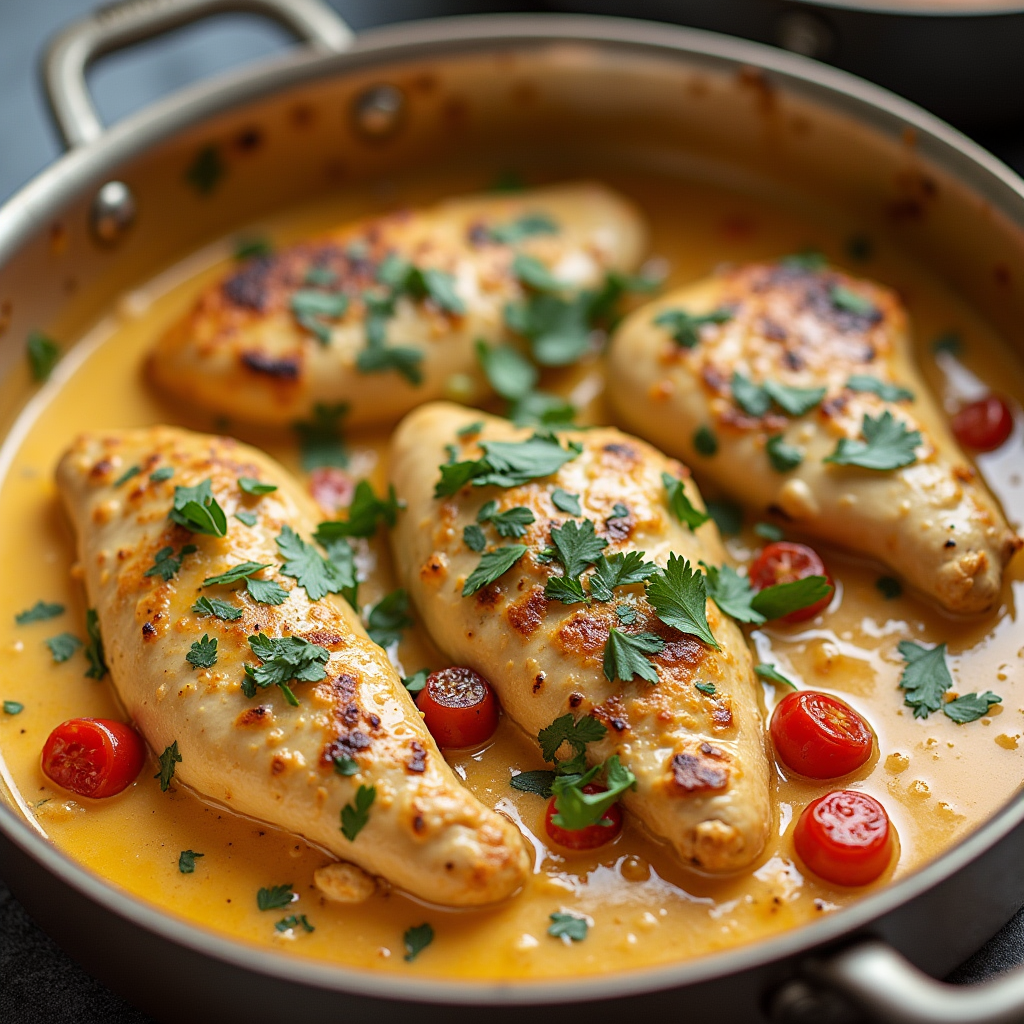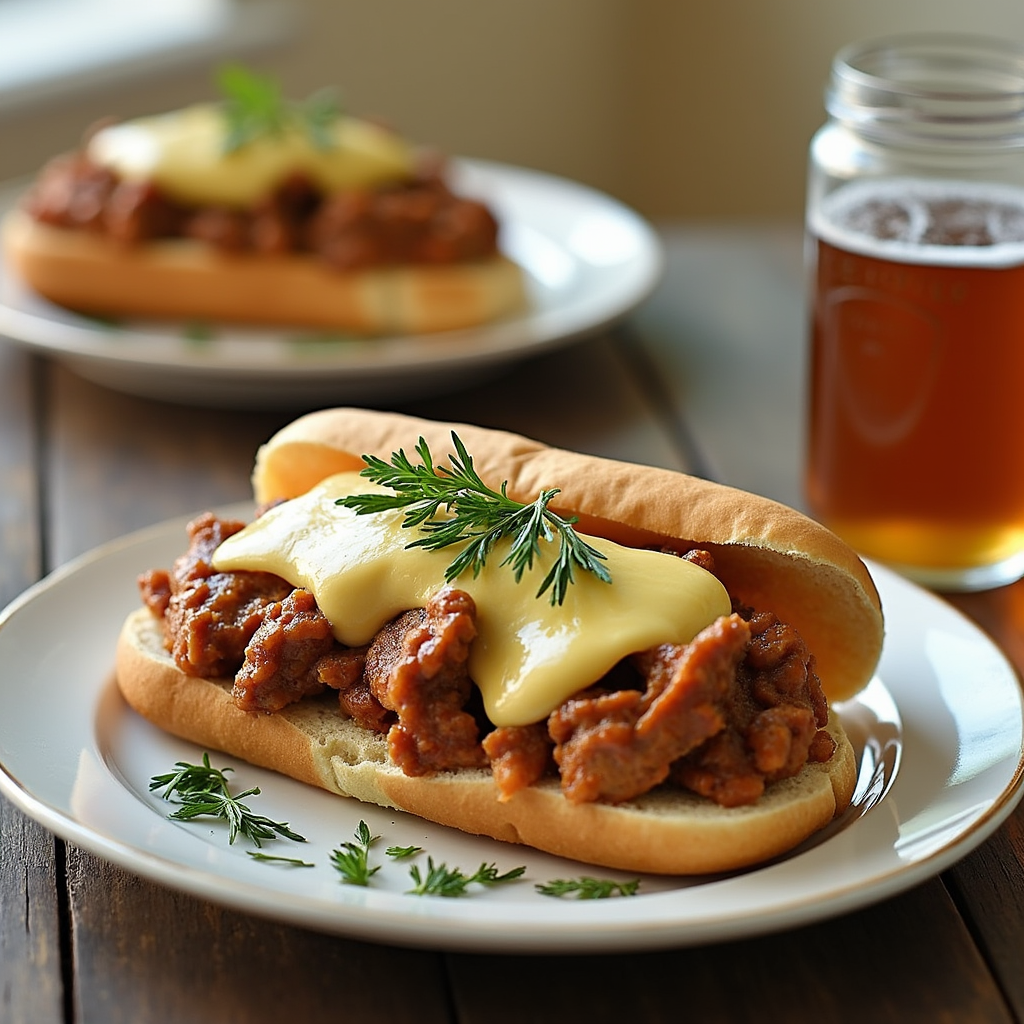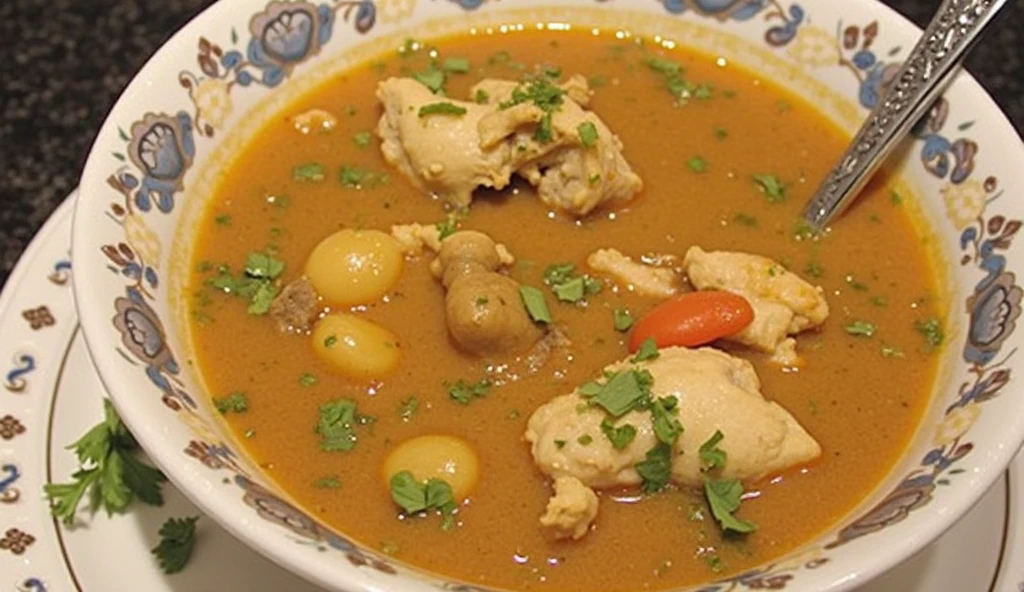
Picture this: snowflakes dancing outside your frost-kissed window while you step into your home, greeted by the rich, mouthwatering aroma of chicken stew simmering away. That first whiff instantly melts the winter chill from your bones. There’s something almost magical about the way comfort food creates an immediate sense of wellbeing, isn’t there?
This isn’t just any chicken stew recipe – it’s one that has traveled through generations in my family, refined with each loving hand that stirred the pot. What started as grandmother’s humble weeknight dinner has evolved into our family’s winter evening ritual, bringing everyone to the table with anticipation glowing in their eyes.
What makes this particular chicken stew stand apart? Perhaps it’s the tender chunks of chicken that practically melt in your mouth. Maybe it’s the perfect harmony of garden vegetables and aromatic herbs that dance together in a velvety broth. Or possibly it’s simply knowing that something so nourishing awaits you at day’s end when darkness falls early and temperatures plummet.
Table of Contents
Why Chicken Stew Becomes Your Winter Evening Hero
There exists genuine science behind why steaming bowls of savory stew provide profound comfort during the coldest months. When temperatures drop, your body naturally craves warming foods that maintain core temperature. The slow-cooked nature of stew delivers sustained warmth unlike quicker meals.
Beyond physical comfort, winter chicken stew offers exceptional nutritional benefits. The slow-cooking process allows vegetables to release their nutrients gradually into the broth, creating a meal that’s remarkably balanced. Proteins from the chicken combine with complex carbohydrates from potatoes and fiber-rich vegetables to deliver sustained energy – precisely what your body requires during winter months.
Let’s not overlook the psychological aspect – the tantalizing aromas filling your kitchen trigger powerful responses in your brain. These scents activate memory centers, potentially transporting you back to childhood kitchens or holiday gatherings past. This sensory experience creates a profound sense of security and contentment before you’ve taken your first bite.
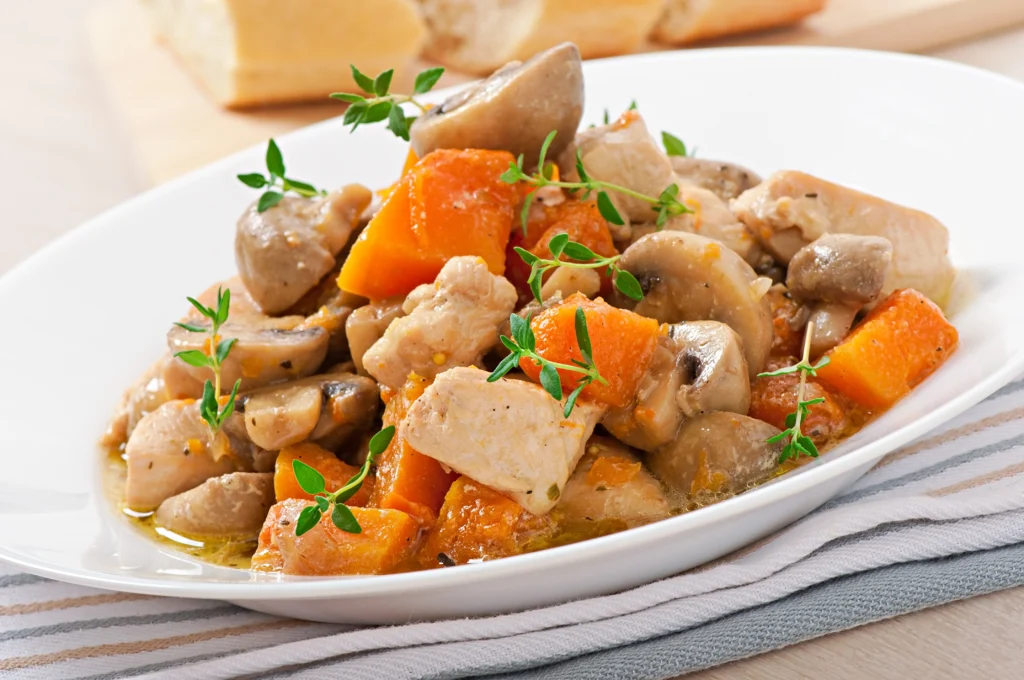
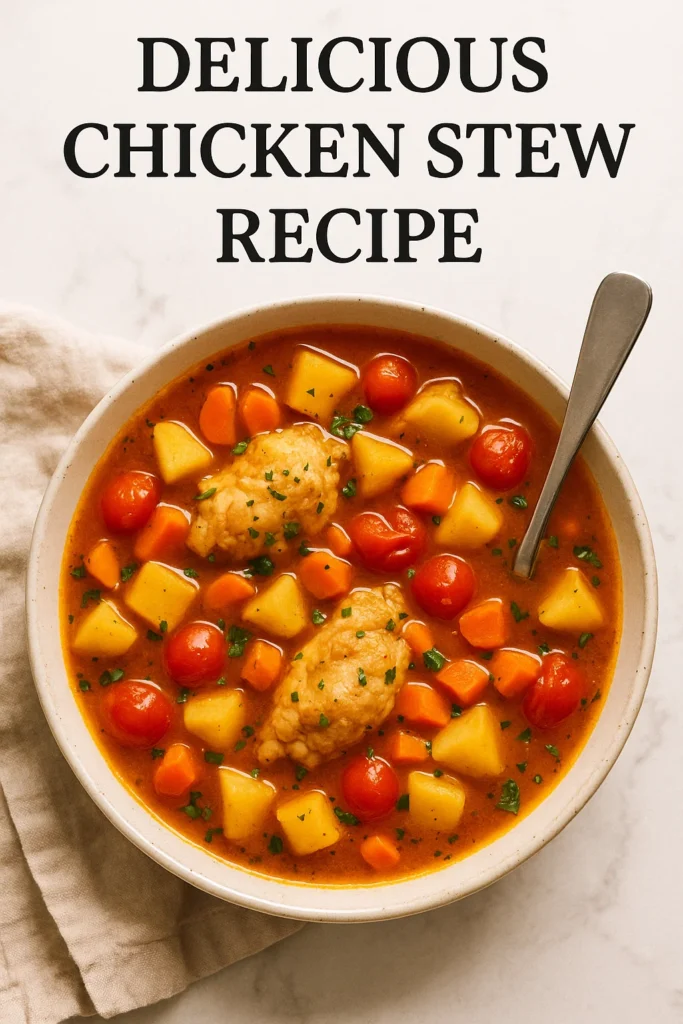
Essential Ingredients for the Perfect Winter Chicken Stew
Creating magnificent chicken stew begins with selecting quality ingredients. Here’s everything you’ll need to craft this winter masterpiece:
| Ingredient | Quantity | Notes |
|---|---|---|
| Chicken thighs | 2 pounds | Bone-in for extra flavor |
| Carrots | 4 medium | Roughly chopped |
| Celery | 3 stalks | Diced |
| Yellow onion | 1 large | Diced |
| Garlic | 4 cloves | Minced |
| Baby potatoes | 1 pound | Halved |
| Chicken broth | 4 cups | Low-sodium recommended |
| Bay leaves | 2 | Whole |
| Fresh thyme | 4 sprigs | Or 1 tsp dried |
| Fresh rosemary | 2 sprigs | Or 1/2 tsp dried |
| All-purpose flour | 3 tablespoons | For thickening |
| Olive oil | 2 tablespoons | For sautéing |
| Salt and pepper | To taste | Adjust as needed |
| Frozen peas | 1 cup | Added at the end |
Special Add-ins to Elevate Your Chicken Stew
Want to customize your stew and make it truly distinctive? Consider incorporating these optional ingredients:
- Brown mushrooms for remarkable earthiness and umami depth
- Thinly sliced leeks for subtle, buttery sweetness
- A splash of white wine for brightness and complexity
- Winter parsnips for their distinctive sweet notes
- Fresh parsley or chives scattered just before serving
Step-by-Step Chicken Stew Recipe Instructions
Preparation Phase
Begin by patting your chicken thighs dry with paper towels – this seemingly small step ensures proper browning rather than steaming. Season generously with salt and freshly cracked black pepper on both sides.
When preparing vegetables, aim for relatively uniform sizes. Carrots and potatoes should be cut into pieces approximately 1-inch across, allowing them to cook evenly while maintaining their integrity throughout the long simmering process. The onions and celery should be diced somewhat smaller, enabling them to practically dissolve and flavor the base of your stew.
Consider crushing garlic cloves with the flat of your knife before mincing – this releases aromatic oils more thoroughly than chopping alone.
Cooking Method
- Heat olive oil in a large Dutch oven or heavy-bottomed pot over medium-high heat until shimmering but not smoking.
- Carefully arrange seasoned chicken thighs skin-side down in the hot oil, working in batches if necessary to avoid overcrowding. Allow to brown undisturbed for 5-6 minutes until deeply golden. Turn and brown the opposite side for 3-4 minutes, then transfer to a plate.
- Reduce heat to medium and add onions and celery to the pot with a pinch of salt. Sauté for 4-5 minutes until beginning to soften, scraping up any flavorful browned bits from the bottom.
- Add garlic and cook for one additional minute until fragrant but not browned.
- Sprinkle flour over vegetables and stir constantly for 2 minutes to cook out the raw flour taste.
- Gradually pour in chicken broth while stirring constantly to prevent lumps from forming.
- Return chicken to the pot along with any accumulated juices, then add carrots, potatoes, bay leaves, thyme, and rosemary. Bring mixture to a gentle boil.
- Reduce heat to maintain a low simmer, cover partially, and cook for approximately 45 minutes until vegetables are tender and chicken easily pulls from the bone.
- Remove chicken pieces, shred meat (discarding skin and bones), and return meat to the pot.
- Stir in frozen peas and simmer for 5 additional minutes. Taste and adjust seasoning as needed before serving.
Three Ways to Cook Your Winter Chicken Stew
Stovetop Chicken Stew Method
The traditional stovetop method described above offers unparalleled control over the cooking process. You’ll maintain direct oversight of the simmering intensity, ensuring vegetables become perfectly tender without disintegrating. This approach typically requires about 90 minutes from start to finish, with active preparation time of approximately 25 minutes.
For best results, use a heavy-bottomed pot that distributes heat evenly. Check occasionally to ensure the simmer remains gentle – rapid boiling toughens meat and breaks down vegetables too quickly.
Slow Cooker Chicken Stew Variation
For those hectic weekdays when evening cooking isn’t feasible, your slow cooker becomes invaluable. Begin your day by completing the browning steps (chicken and vegetables) in a skillet, then transfer everything to your slow cooker. Add remaining ingredients except for peas and flour.
Instead of flour, whisk 3 tablespoons cornstarch with 1/4 cup cold water and add this mixture during the final 30 minutes of cooking. Frozen peas should likewise be added during this final stretch.
Cook on low for 7-8 hours or high for 4-5 hours. The extended, gentle cooking renders meat extraordinarily tender while allowing flavors to meld beautifully.
Instant Pot Chicken Stew Technique
When winter comfort is needed quickly, your pressure cooker creates remarkable results in a fraction of the time. Use the sauté function to brown chicken and vegetables directly in the pot. Add remaining ingredients except peas, secure the lid, and cook on high pressure for 20 minutes.
Allow 10 minutes natural pressure release before manually releasing remaining pressure. Remove chicken to shred, then return to pot along with frozen peas. Activate sauté function again briefly to heat peas through.
The pressure cooking method remarkably achieves slow-cooked flavor in approximately 45 minutes total.
What Makes This Chicken Stew Recipe Perfect for Winter Evenings
The magic of this recipe extends beyond convenience. During slow cooking, collagen from chicken breaks down into gelatin, creating that distinctive silky mouthfeel that defines exceptional stew. Meanwhile, starches from potatoes gradually release, naturally thickening your broth without requiring excessive flour or cornstarch.
Nutritionally speaking, chicken stew represents the ideal winter meal – delivering protein for muscle maintenance, complex carbohydrates for sustained energy, and abundant vegetables providing essential vitamins precisely when seasonal fresh produce becomes limited.
Perhaps most practically, this stew improves with time. Prepare a double batch on Sunday afternoon, and you’ll discover Monday’s reheated portion tastes even more magnificent as flavors continue melding overnight. Store refrigerated portions in airtight containers for up to four days, reheating gently on the stovetop with an occasional splash of broth if needed.
Serving Suggestions to Complete Your Winter Meal
Best Sides to Pair with Chicken Stew
While this stew stands proudly alone as a complete meal, certain accompaniments elevate the experience further:
- Tear chunks from a crusty artisan loaf for sopping up those last precious spoonfuls
- Bake quick buttermilk biscuits for a southern-inspired pairing
- Balance richness with a simple green salad dressed lightly with vinaigrette
- Roast additional winter vegetables like Brussels sprouts or butternut squash for textural contrast
Creating the Perfect Winter Atmosphere
Transform your evening meal into a complete experience by dimming overhead lights in favor of candles. Consider serving stew in pre-warmed bowls to maintain temperature longer. A medium-bodied red wine like Côtes du Rhône pairs wonderfully, while alcohol-free alternatives include warm apple cider or spiced tea.
Create a tradition by enjoying your chicken stew by firelight or wrapped in your favorite throw blanket – small gestures that celebrate winter’s invitation to slow down and savor.
Troubleshooting Your Chicken Stew Recipe
Even experienced cooks occasionally encounter challenges with stew. Here are solutions to common issues:
If your stew seems watery, remove lid completely during final cooking stages to encourage evaporation. Alternatively, create a slurry using 1 tablespoon cornstarch mixed with 2 tablespoons cold water, stirring into simmering stew.
For underseasoned results, remember that salt perception diminishes in very hot foods. Allow a spoonful to cool slightly before tasting. Fresh herbs added just before serving brighten flavors immensely, as does a small splash of vinegar or lemon juice.
Should you find your chicken remains tough despite lengthy cooking, you’ve likely simmered too vigorously. Reduce heat to ensure the gentlest possible bubble, and allow additional cooking time.
Frequently Asked Questions About Chicken Stew Recipes
- Can I make this chicken stew recipe ahead of time?
The flavors in this chicken stew recipe actually improve if made a day ahead, making it perfect for meal prep. Simply reheat gently on the stovetop, adding a splash of broth if needed to restore consistency. - How long does homemade chicken stew last in the refrigerator?
This chicken stew recipe will keep well in an airtight container for 3-4 days in the refrigerator. The flavors continue developing beautifully during storage. - Can I freeze this chicken stew recipe?
Yes, this chicken stew recipe freezes exceptionally well for up to 3 months. Just thaw overnight in the refrigerator before reheating. Consider freezing in individual portions for convenient single servings. - What’s the best cut of chicken for a chicken stew recipe?
Thighs work best in this chicken stew recipe as they remain tender during long cooking and add more flavor than breast meat. Their higher fat content prevents drying out, creating that melt-in-your-mouth texture. - How can I thicken my chicken stew recipe if it’s too watery?
For this chicken stew recipe, make a slurry with 1 tablespoon cornstarch and 2 tablespoons cold water, then stir into the simmering stew. Allow to cook for at least 2 minutes to achieve full thickening power. - Can I make this chicken stew recipe in a Dutch oven?
A Dutch oven is actually ideal for this chicken stew recipe as it conducts heat evenly and has a tight-fitting lid to keep moisture in. The enameled interior also prevents sticking and makes cleanup remarkably simple. - What makes a chicken stew recipe different from chicken soup?
This chicken stew recipe is thicker and heartier than soup, with less liquid and usually containing a starch like potatoes. The consistency should coat your spoon rather than run off it. - Is this chicken stew recipe gluten-free?
To make this chicken stew recipe gluten-free, simply substitute the all-purpose flour with a gluten-free flour blend or cornstarch. Always verify your chicken broth is gluten-free as well, as some commercial brands contain wheat derivatives.

